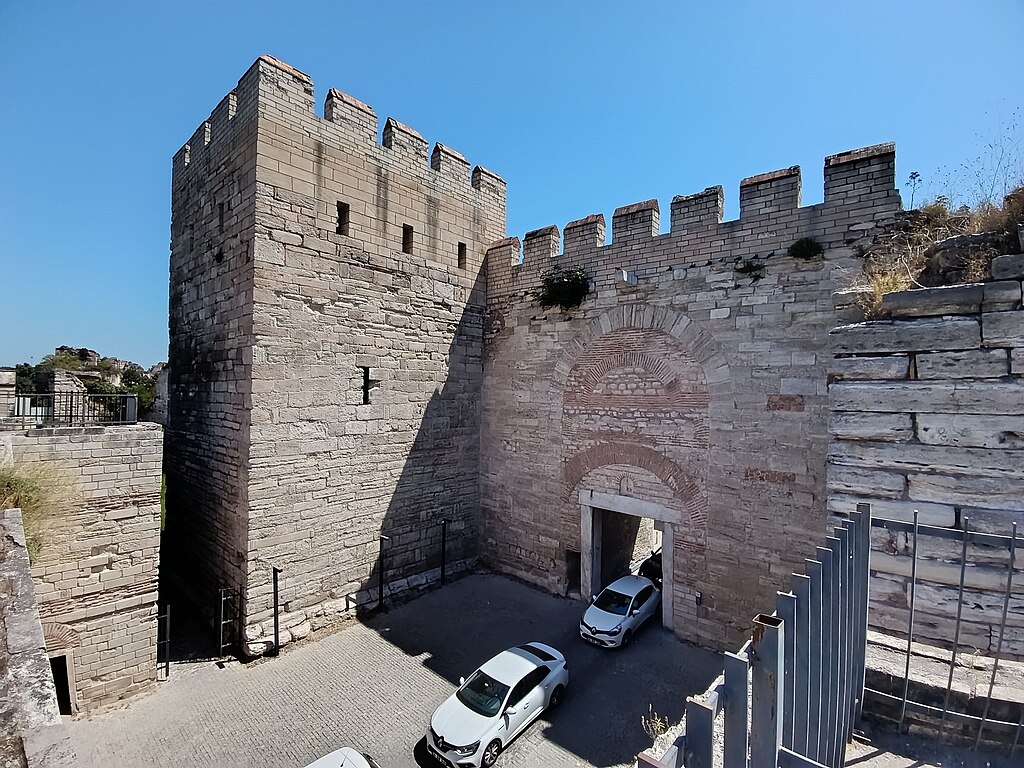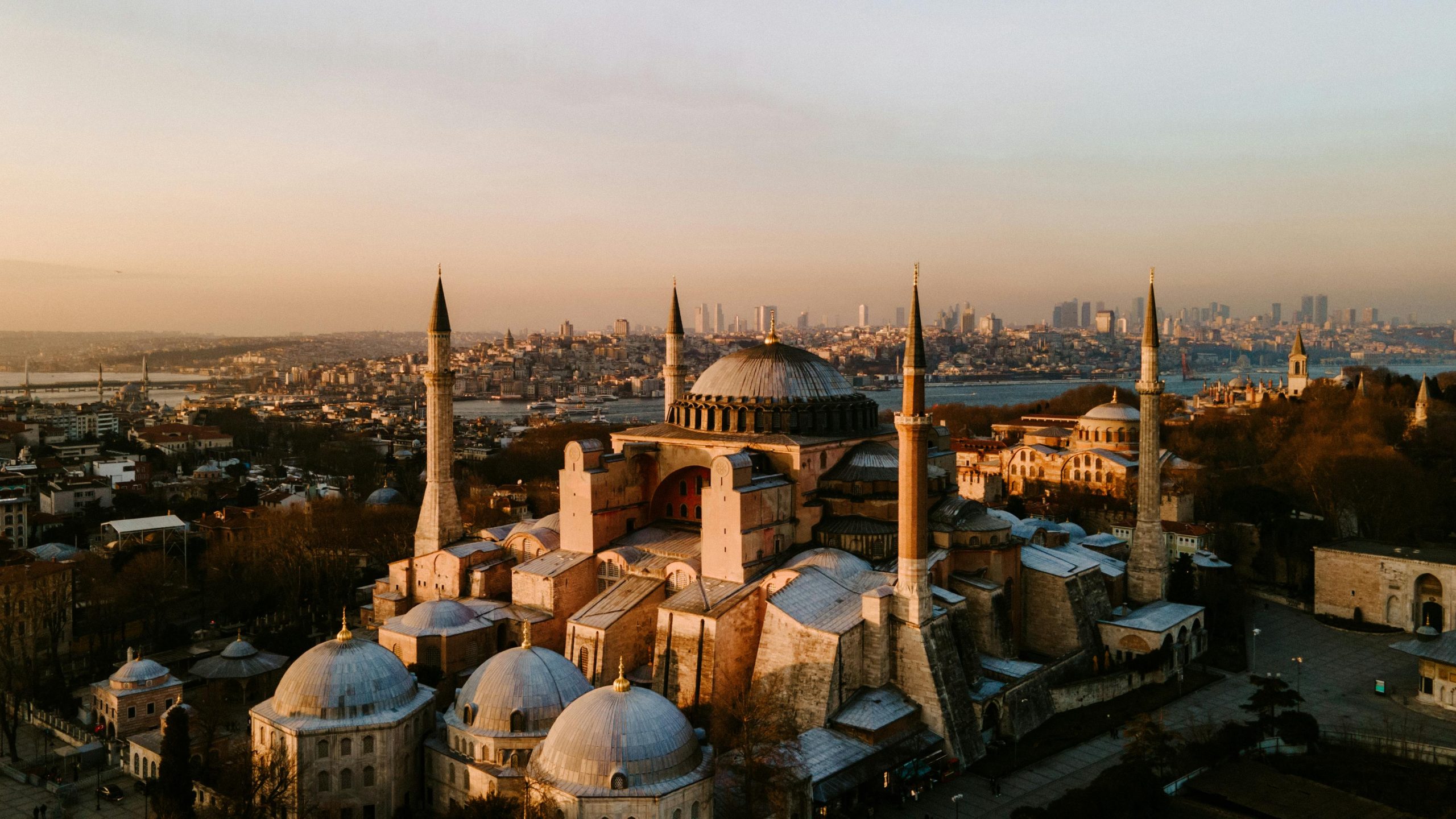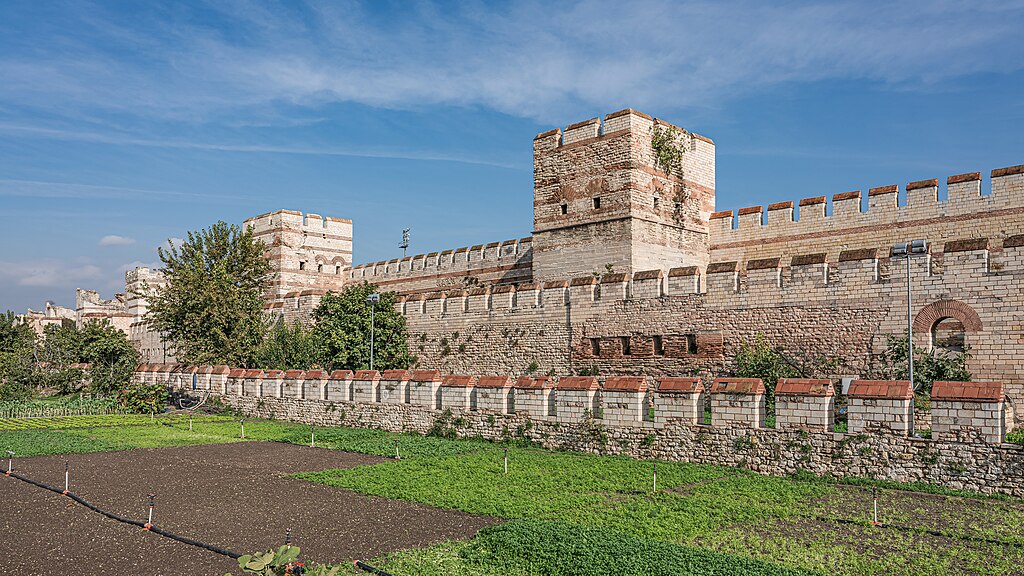Gate of Rhesios, Istanbul
City Gate in Istanbul

The Gate of Rhesios — known today as Mevlânakapı (Mevlânakapı Kapısı) — is one of the finest surviving gateways of the Theodosian Walls, the monumental defensive system that once protected Constantinople. Built in the 5th century under Emperor Theodosius II, it remains remarkably intact, preserving its original structure and architectural details from the height of the Byzantine Empire. Standing quietly in Istanbul's Fatih district, this gate is one of the best places to visit in Istanbul for travelers seeking to uncover the city's deeper, more ancient layers.
According to the 10th-century Byzantine Suda lexicon, the gate's name honors an ancient general named Rhesios, possibly a benefactor or commander associated with its construction. Later sources, however, called it the Gate of Rhegion — after a nearby suburb — or the Gate of Rhousios, perhaps in reference to the “Reds,” one of Constantinople's famous Hippodrome factions. Whatever the origin, Mevlânakapı's enduring strength and ornate inscriptions make it a great place to visit on a walking tour of Istanbul's old city walls.
History and Significance of the Gate of Rhesios (Mevlânakapı Kapısı)
The Gate of Rhesios dates back to the early 5th century, part of the Theodosian Wall system built under Emperor Theodosius II to defend the expanding city of Constantinople. Stretching over six kilometers from the Sea of Marmara to the Golden Horn, these double walls with defensive towers were among the most formidable fortifications of the medieval world. The Gate of Rhesios, located roughly in the middle section of the line, served as a secondary city gate — less ceremonial than the Golden Gate but essential for movement between the city and its western suburbs.
Its original name likely commemorated Rhesios, a Byzantine general or notable figure, though later names — Rhegion and Rhousios — reflect Constantinople's ever-shifting cultural and political life. Inscriptions carved into its towers, however, have ensured that its Byzantine identity has never faded. The most famous of these reads: “The Fortune of Constantine, Our God-Protected Despot, Triumphs…” — a phrase that encapsulates the divine authority and imperial pride of the Byzantine rulers. With at least six known inscriptions, the Gate of Rhesios holds more epigraphic records than any other gate along the Theodosian Walls.
Things to See and Do at the Gate of Rhesios
Visitors will find the Gate of Rhesios to be one of the most visually complete and architecturally impressive along the ancient land walls. Its arched entryway, flanked by two massive towers of alternating brick and limestone courses, showcases the signature craftsmanship of early Byzantine military engineering. Unlike many other gates that suffered later reconstruction, Mevlânakapı still conveys its original 5th-century design and proportions.
The inscriptions on its towers are a highlight — a rare survival of imperial propaganda etched directly into the city's stone defenses. Although weathering has softened the text, traces remain visible, offering a direct link to the emperors who once ruled here. From the nearby ramparts, visitors can enjoy sweeping views of both the inner city and the sprawling neighborhoods that now extend beyond the old walls. The area is peaceful, making it ideal for quiet exploration and photography.
How to Get There
The Gate of Rhesios (Mevlânakapı) is located in the Fatih district of Istanbul, along the midsection of the Theodosian Walls near the neighborhood of Mevlanakapı. The nearest Marmaray stop is Kazlıçeşme, about a 25-minute walk from the site. You can use the official TCDD Taşımacılık website to check schedules, compare routes, and purchase tickets for Turkey's national and regional trains operated by TCDD. For a more streamlined experience (especially if you prefer an English interface or want to compare across countries), we recommend using Omio, which allows you to easily compare prices, schedules, and book train tickets across Turkey and the rest of Europe — all in one place. For drivers, there is limited street parking available nearby, and several small paid car parks can be found in the surrounding area. If you are looking to rent a car in Turkey I recommend having a look at Discover Cars, first, as they compare prices and review multiple car rental agencies for you. The gate can also be reached easily by bus or taxi following the old wall route westward from the Yedikule Fortress.
Practical Tips on Visiting the Gate of Rhesios (Mevlânakapı Kapısı)
- Best time to visit the Gate of Rhesios: Early morning or late afternoon for warm lighting and quiet surroundings.
- Entrance fee in Euros: Free.
- Opening hours: Accessible at all times.
- Official website: Not applicable.
- How long to spend: 20–30 minutes.
- Accessibility: Uneven terrain and unpaved paths near the walls; wear sturdy shoes.
- Facilities: Minimal; bring water and essentials.
- Photography tip: Capture the gate's arch framed by its twin towers or zoom in on the surviving inscriptions.
- Guided tours: Often included in Byzantine heritage or city wall walking tours.
- Nearby food options: Small local cafés and bakeries in the Mevlanakapı neighborhood.
Is the Gate of Rhesios (Mevlânakapı Kapısı) worth visiting?
Yes — the Gate of Rhesios is one of the top sights in Istanbul for anyone exploring the city's ancient defensive system. Its exceptional preservation and abundance of inscriptions make it one of the best surviving testaments to the Byzantine Empire's power and pride. Standing before its towers, you'll sense both the engineering genius and spiritual confidence that defined the heart of Constantinople.
FAQs for Visiting the Gate of Rhesios (Mevlânakapı Kapısı)
Why is it called Mevlânakapı today?
“Mevlânakapı” is the modern Turkish name for the historic Gate of Rhesios, preserving its location and legacy in contemporary Istanbul.
How old is the gate?
It dates from the early 5th century, built during Emperor Theodosius II's reign.
Are the inscriptions still visible?
Yes, several are still partially legible, though worn by time and weather.
Can visitors climb the walls?
Some adjacent sections of the Theodosian Walls near Mevlânakapı are climbable, offering excellent city views.
Was this gate used for imperial ceremonies?
No, it primarily served as a local and defensive gate rather than a ceremonial entrance like the Golden Gate.
Nearby Attractions to the Gate of Rhesios (Mevlânakapı Kapısı)
- Golden Gate – The grand triple-arched ceremonial entrance once used by Byzantine emperors.
- Silivrikapı Gate – A nearby gate featuring fine masonry and Ottoman restorations.
- Yedikule Fortress – A 15th-century Ottoman fort that incorporated the southern end of the Theodosian Walls.
- Mevlanakapı Mosque – A small neighborhood mosque built near the ancient gate.
- Gülhane Park – A tranquil escape in the Old City, formerly part of the Topkapi Palace gardens.
The Gate of Rhesios appears in our Complete Guide to Visiting Istanbul!
This website uses affiliate links which may earn a commission at no additional cost to you!
Visiting Gate of Rhesios
Nearby Attractions
- Panorama 1453 History Museum (0.5) km
Museum in Istanbul - Gate of the Spring (0.9) km
City Gate in Istanbul - Gate of Saint Romanus (1.0) km
City Gate in Istanbul - Fifth Military Gate (1.1) km
City Gate in Istanbul - Xylokerkos Gate (1.6) km
City Gate in Istanbul - Golden Gate (2.3) km
City Gate in Istanbul - Yedikule Fortress (2.3) km
Castle in Istanbul - Gate of Charisius (2.4) km
City Gate in Istanbul - Chora Church (2.4) km
Church in Istanbul - Palace of the Porphyrogenitus (2.7) km
Palace in Istanbul


